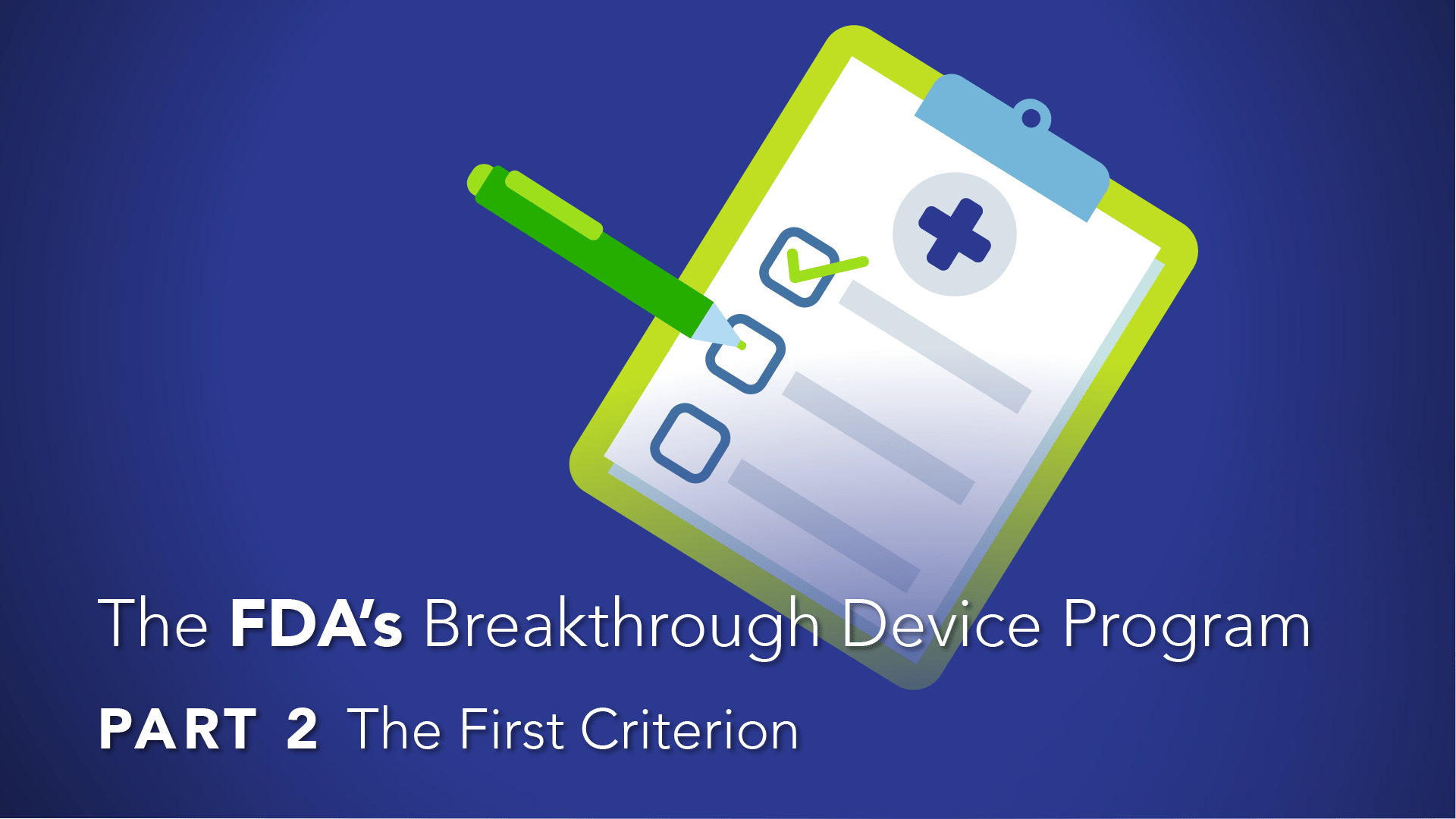
In our last post, we discussed the FDA's Breakthrough Device Program and the final guidance defining the program. You can catch up on that here if you missed it: The Breakthrough Device Program: Part 1
In this post, we are going to drill down into the first criterion, the most scrutinized by the FDA. The criterion we are referencing is from the US FDA’s final guidance for the Breakthrough Device Program .
The First Criterion
The First Criterion: Provide for more effective treatment or diagnosis of life-threatening or irreversible debilitating human disease or conditions.
When deciding if a device meets the first criterion, FDA considers the following factors:
1. First, does the device provide “more effective” treatment or diagnosis?
It is important to demonstrate a reasonable expectation that the device could provide for more effective treatment or diagnosis of the disease or condition identified in the proposed indication(s) for use.
An additional thing to keep in mind is that “more effective” means less adverse events. Mechanisms for demonstrating a reasonable expectation of technical and clinical success could include literature or preliminary data.
2. Secondly, is the disease or condition “life-threatening”?
For the purposes of the Breakthrough Device Program, FDA considers a disease or condition to be life-threatening if the likelihood of death is high unless the course of the disease is interrupted in a population or subpopulation. Examples of life-threatening diseases or conditions include stroke, cancer, and trauma.
3. Finally, is the disease or condition “irreversibly debilitating”?
For the purposes of the Breakthrough Device Program, FDA considers a disease or condition to be irreversibly debilitating if it is associated with morbidity that has a substantial impact on day-to-day functioning for a population or subpopulation. Examples of irreversibly debilitating disease or conditions include cancer, stroke, and amyotrophic lateral sclerosis.
Putting It All Together
When evaluating your device, if point #1 is true, and either point #2 or point #3 is true, then there is a chance your device may be eligible for the Breakthrough Device Program!
However, you will also need to see if your device satisfies the second criterion.
Follow us on LinkedIn or Twitter so you don't miss Part 3 of this series, where we will analyze the second criterion for Breakthrough Device Program eligibility.